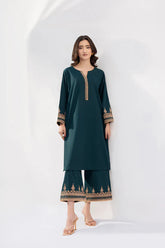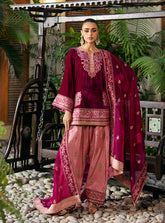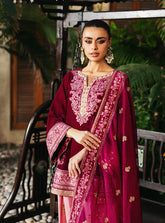Where Tradition Meets Luxury:The evolution of Pakistani fashion brands.
Pakistan has a glorious fashion history that is intricately strong with the fibre of the fashion industry in the country. In this progressive world, the country also has shifted its stance on luxury clothes too. Previously there was quite a shift which has made it possible to develop luxury brands with quality and modern outlooks. In this article, the author examines the development of Pakistani fashion brands, the impact of tradition as well as luxury in the industry primarily using Japantextiles premium fibres.This work explores the rich background of Pakistani fashion.
A Historical Overview
The essence of Pakistani fashion can be blamed on a rich culture that, through assimilation from a history of Mughal rule and Persian look and fair, formed its own creativity and uniqueness from different regions. Dresses like the shalwar kameez, the dupattas as well as lehengas have remained popular dresses for many decades. Modern usage however has been more liberal in the last few decades to allow considerable freedom to designers whilst still paying homage to history.
The Role of Textiles
Clothing fashions are an indispensable part of Pakistani culture. They particularly wear bright fabrics such as cotton, silk, and chiffon that are finesse with beautiful embroidery and fine jewellery. With penetration of luxury brands came focus on quality of textile material more than any other characteristic. This is now becoming a trend in high end designer label production with Japantextiles as examples of some international components providers for materials.
The appraisal of Luxury Brands

Redefining Pakistani Fashion
Pakistani fashion in general during the 1980 and 1990s was not impressive and revolutionary changes were observed only at the beginning of 2000’s. Sana Safinaz, Elan, Maria B were already designing to lift local fashion but now began focusing on introducing ready to wear collections targeting a rather higher end consumer. Not only did these brands update these essential shapes, but they also did so using luxurious materials and new ideas. This change was a turning point in the transformation of Pakistani fashion into a contemporary definition of luxury by embracing the cultural aspects of its fashion.
International Influence
Eventually, after Pakistan designers started emerging and participating in the international fashion weeks, the challenge was to create clothing befitting that of international luxury brands. This resulted in emphasis on such design factors as style, quality, and design intensity. Originally it had become easier to source high-quality textiles through international textile suppliers such as Japantextiles that made it possible for designers to incorporate the fabric on their creations. These international standards consequently played an important role in the better positioning of Pakistan fashion on the international level.
Heritage Processes in Luxury Apparel
Handcrafting Heritage
Despite moving into modern fashion aspects, most luxury brands-carve out a niche to practice traditional craft passed down from generations. Hand embroidery, block printing, and weaving are the most relevant to the concept of luxury clothing in Pakistan. These techniques have been applied in the Khaadi and Alkaram Studios premium brands, where creativity of local artisans is embraced.
The Japantextiles Advantage
Furthermore, the cooperation with Japantextiles is useful in integrating both conventional artisanal production and current advanced fabric engineering. Japantextiles provides various types of fibres that add value to luxurious fabrics that make up up-market wears. That is why designers are capable of combining the delicate hand craftsmanship of Pakistani embroiderers with innovative fabric solutions from Japantextiles, organic plant-based fabrics that are luxurious and at the same time sustainable.
The Expansion Of Luxury Fashion Market

Evolving Consumer Preferences
By and large, Pakistan's middle class is growing and with this growth, the craving for luxury brands in fashion also grows. The so-called Zeitgeists rise as consumers look for brands that are exclusively unique, offer high quality and a hint of sophistication. Consumers have also been affected by social media, especially fashion influencers who popularised the need to wear and patronise locally made clothes and have tapped into the market by meeting the demand of people’s need for luxurious dresses.
The Impact of Online Retail
The effect of departure from a tradition of luxurious stores and boutiques, transportation of luxury fashion to the virtual plane tended to reduce the barriers for the common people. The emerging Pakistani brands' typical paradigm is that a customer can now buy the best fashion to wear from home. This has also helped brands to reveal their product line and even work personally with textile businesses such as Japantextiles to make luxury more affordable to the public.
It is also important to know the fact that Pakistani fashion brands have also evolved and there is a latent demand for sustainable fashion. With the growing appreciation for environmental issues, most of the designers are going for environmental products and the right ways of creating them. It also chimes with what is now brand ‘conscious consumers’, and also with indigenous methodologies founded on such principles as quality and craftsmanship as opposed to quantity.
Moreover, ideas of historical crafts legends and modern designers are intertwined today more frequently while concentrating on local masters and designers. These tie-ups further build the narrative aspect of each of these collections, helping luxury brands to celebrate the Pakistani identity while being a global product. It is good to look into the future as tradition and innovation are seen to play important roles in this energy sector.
Conclusion
The advancement that luxury fashion has gone through in three decades in Pakistan is characterized by fusion and conflict of the modern and the traditional. As designers remain abreast with their traditional culture, they are also going international and hydroking quality material. However, through their incorporation of these timeless concepts within a selection of premium textile including Japantextiles, this new generation of luxury clothing manufacturers can be seen to represent the next step forward in the industry.
Many emerging catwalks and new designers beginning to surface in Pakistan prove a dare for the luxury market and its future for the art of Pakistan fashion to bloom and progress in the international arena. As we continue to witness this evolution, one thing remains clear: The blending of the traditional and the luxurious will remain the hallmark of Pakistani fashion in many years to come.





